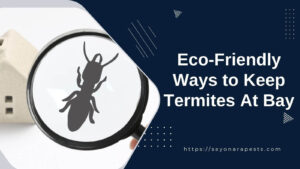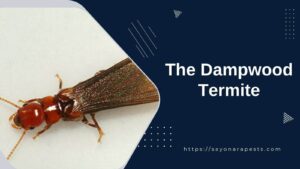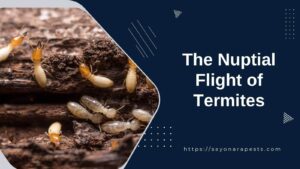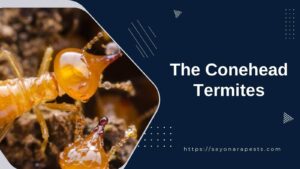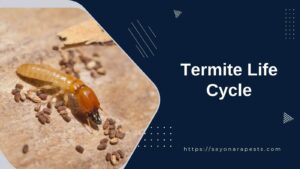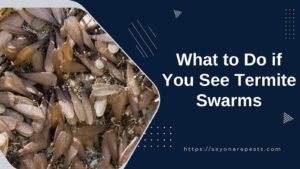Termites are these little creatures who can’t get enough of eating away our houses. These termites are tricky as they are challenging to detect.
However, one of the telltale signs of their existence can be seen in a form that resembles sawdust. In this article, we will talk about termite droppings and what to do when you see one.
What are Termite Droppings?
Droppings, or frass, are pellets of waste made when termites eat wood and other things made of cellulose.
These droppings can tell you a lot about whether or not there are termites in a particular area.
What Do Termite Droppings Look Like?
Termite droppings can look different depending on the type of termite and the kind of wood it eats. But they generally look like small, long pellets or sand grains.
These can also vary in size and color. In some cases, the pellets may be as small as a pinhead, while in others, they may be more prominent and more noticeable.
Droppings can be anywhere from light brown to dark brown, depending on the type of termite and the type of wood it ate. Most fresh droppings are lighter in color, but they may get darker as they age.
You can tell them apart from other trash or feces if you see termite droppings. Unlike other pests or animals, termite droppings don’t have any bits of food or other organic matter in them.
Where Are Termite Droppings Usually Found?
You can find termite droppings in many places where termites have been active. Termites usually make their nests in damp, dark areas like basements, crawl spaces, attics, and the insides of walls.
As they eat wood, they leave behind their waste near where they eat. Termite droppings are usually found on windowsills, baseboards, wood furniture, or piles near infested wood.
It’s important to remember that termite droppings might not always be easy to spot. Termites are good at hiding what they do and often build tunnels or mud tubes to keep themselves safe.
Termites use these tubes to get from their nests to places where they can find food. They are made of soil, bits of wood, and termite droppings.
How Do You Tell If The Termite Droppings Are New Or Old?
It can be hard to tell the difference between new and old termite droppings, but there are a few things you can look for that can help.
Frass, which termite droppings are called when fresh, tends to be lighter in color and may look slightly wet. They feel like sawdust or coffee grounds because they are soft and crumbly.
Fresh droppings are easy to break apart or smudge when you touch them.
On the other hand, termite droppings that have been around for a long time tend to be darker and drier. Over time, the water evaporates, which makes them more rigid and denser.
Old droppings might look and feel more solid and thick. They might even look shiny or like they’ve been varnished.
Checking the area around the droppings can help determine if they are new or old. If you see signs of recent termite activity, like mud tubes, damaged wood, or live termites, the droppings are more likely to be recent.
Also, if you clean up the droppings and they return quickly, there is an active infestation.
Types of Termite Droppings
Termite droppings can vary depending on the species of termites and their feeding habits. The two central termites commonly associated with droppings are drywood and subterranean termites.
Drywood Droppings
Drywood termites are known to live in wood that is dry and old. Their droppings, also called “frass,” are unique and can help you find them.
These termites usually leave behind tiny, long pellets about the same size as grains of sand or salt. Most of these pellets have six sides and can be light brown, dark brown, or black.
They also make small holes in infested wood called “kick-outs.” They use these holes to push their waste out, making small mounds or pellets near the infestation site.
Over time, these droppings can add up, showing that termites are still eating the wood.
Subterranean Droppings
Subterranean termites live underground, as their name suggests. They build mud tubes to get from their nest to where they find food.
These termites don’t leave their waste in piles like other termites do. Their droppings are usually mixed with soil and other things in their mud tubes.
These droppings may be less clear and harder to spot than the droppings of drywood termites. They often look like a mix of dirt, termite poop, and bits of wood, giving them a muddy or grainy texture.
To find subterranean termite droppings, you must look for signs of their presence in the mud tubes and damaged wood.
What To Do When You See Termite Droppings?
When you see termite droppings, it is crucial to take immediate action to address the potential termite infestation. Here are the steps you should follow:
Confirm The Presence Of Termites
Even though termite droppings are a good sign of termite activity, it is still vital to ensure there are termites. Check the area where the droppings were found in great detail.
Look for other signs of termite infestation, such as mud tubes, damaged or hollow-sounding wood, discarded wings, or live termites. If you prove there are termites, you can figure out how bad the problem is and decide what to do next.
Seek Professional Help
To deal with termite problems, you need specialized knowledge and skills. Contact a reputable pest control company that focuses on getting rid of termites.
They will have the tools, skills, and experience to deal with termite problems effectively.
Professional termite services can thoroughly inspect, determine what kind of termites exist, and devise a targeted treatment plan to eliminate them and stop them from returning.
Follow The Recommendations Of The Professionals
Follow their advice and instructions carefully once you’ve hired a company to eliminate pests.
Depending on how bad the termite problem is and what kind of termites are, they may suggest treatments such as liquid termiticides, bait systems, or fumigation.
To get the best results, it’s essential to follow their instructions.
Address Any Conducive Conditions
Termites like wood that is wet and starting to rot. Take steps to eliminate anything that could help termites get in or attract them.
Fix any leaks and water damage right away. Make sure crawl spaces and attics have enough airflow and less humidity.
Remove any wood debris or things made of cellulose that are near your home because termites could use them as food.
Implement Preventive Measures
Even if you eliminate a termite problem, taking precautions is essential to keep it from happening again. Check your property often for signs of termite activity, like mud tubes or wood that has been damaged.
You could protect your home from future termite infestations by putting up barriers or using treatments. Maintenance and repairs done on time can also help keep termites away.
Frequently Asked Questions (FAQs)
What if I see termite droppings but no termites?
When you find termite droppings but don’t see any actual termites, it can be confusing. Frass, another name for termite droppings, is usually made up of tiny wood-colored pellets that termites throw out of their tunnels.
If there are termite droppings around, termites have been there. But it is possible to find termite droppings even if you don’t see the termites themselves.
Termites are good at hiding and building tunnels inside walls, floors, and other wooden structures. So, if you see termite droppings but can’t find the termites themselves, it’s best to call a pest control service.
Are termite droppings bad?
Termite droppings are a sign that there are termites in the area, and yes, they are bad, so you should take them seriously if you see them. Even though termite droppings are not dangerous to people, they are a vital sign that termites are eating wood on your property.
How do you get rid of dry wood termite droppings?
The first step to eliminating these droppings is to identify the source. Then, we can vacuum or sweep the infested area and dispose of the collected droppings.
The last step is to contact a professional company for termite treatments and prevention programs.
Overall, termite droppings are early signs of an infestation. Knowing what they are, what they are, and what they look like will help you plan actions and strategies to fight against them.


